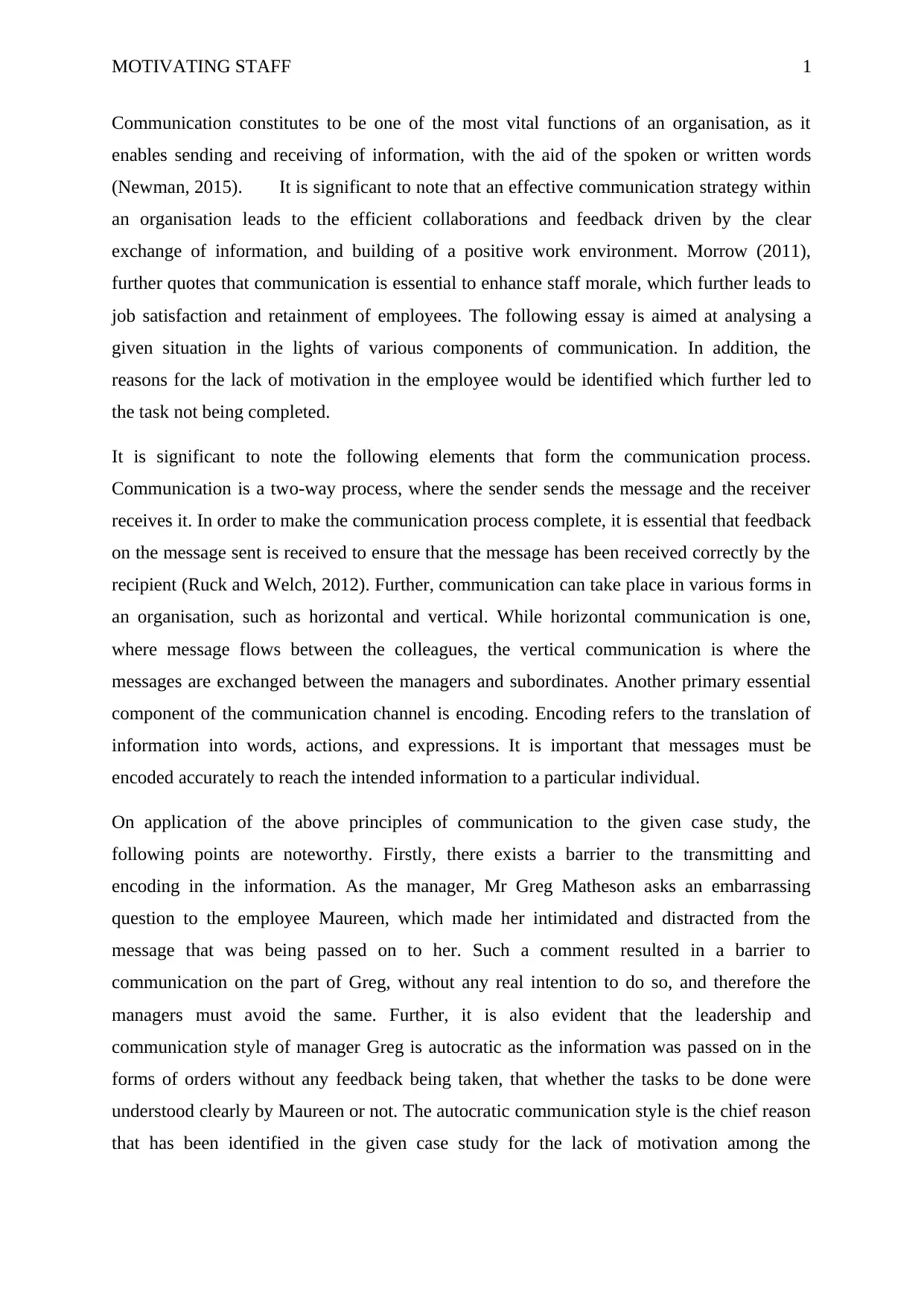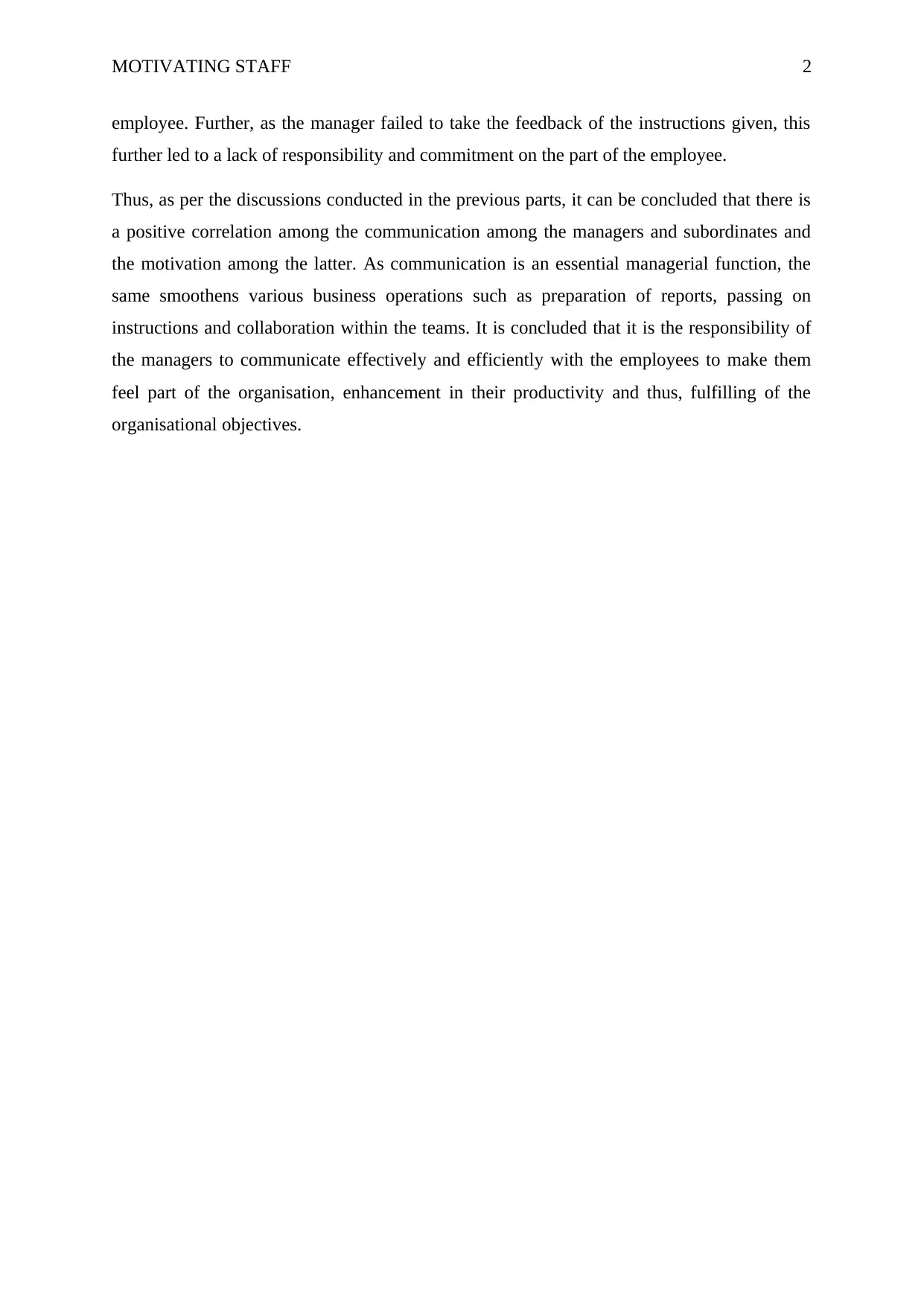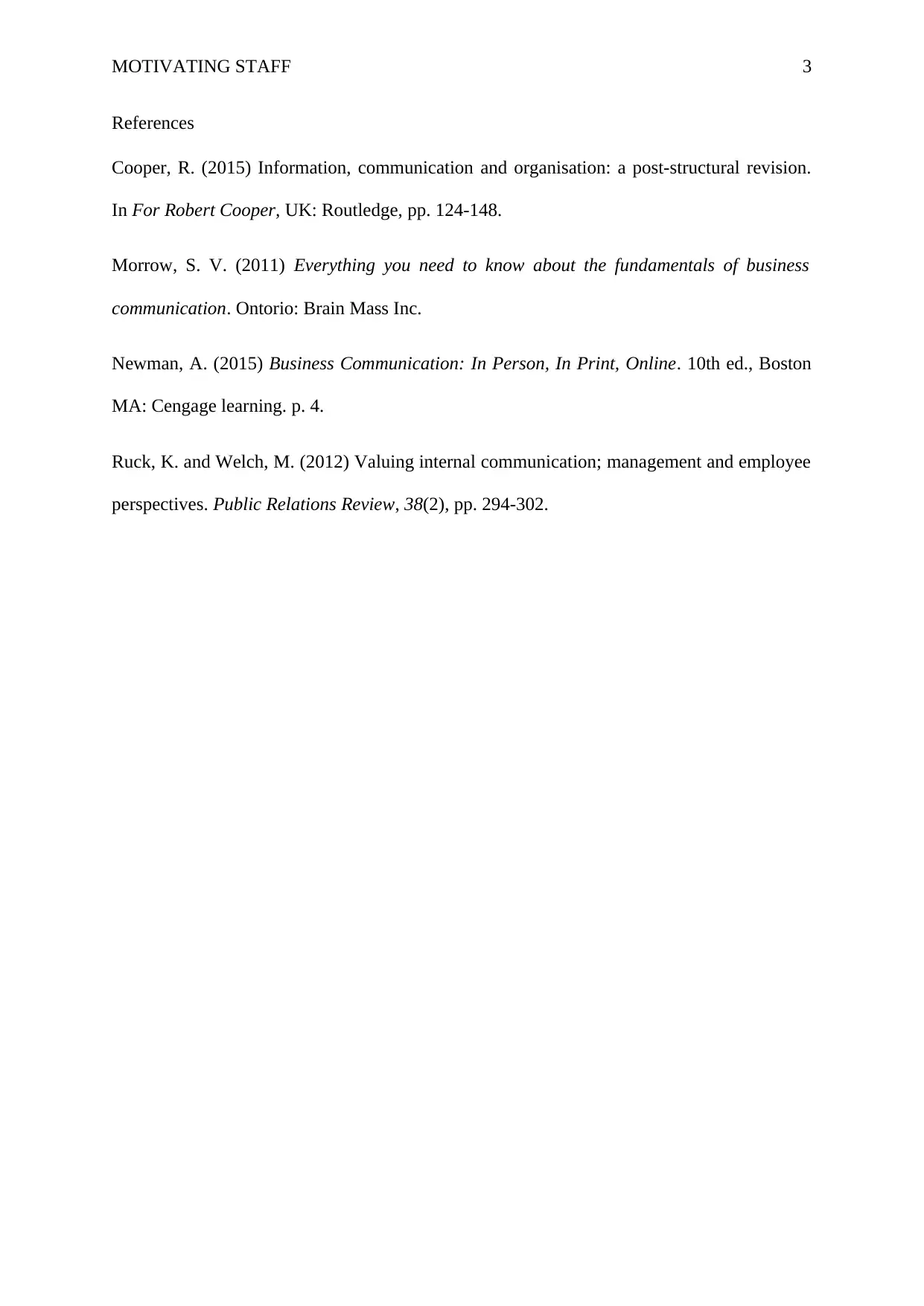Case Study: Communication Strategies for Motivating Staff
VerifiedAdded on 2023/04/21
|4
|757
|413
Essay
AI Summary
This essay examines the critical role of communication in motivating staff, using a case study of a pizza business where a manager's autocratic communication style led to an employee's lack of motivation and incomplete tasks. It highlights the essential components of effective communication, including two-way feedback, horizontal and vertical communication, and accurate encoding of messages. The analysis identifies barriers to communication, such as embarrassing or intimidating remarks, and emphasizes the positive correlation between effective manager-subordinate communication and employee motivation. The essay concludes that managers must communicate effectively to foster a sense of belonging, enhance productivity, and achieve organizational objectives. Desklib offers similar solved assignments and past papers for students.
1 out of 4











![[object Object]](/_next/static/media/star-bottom.7253800d.svg)